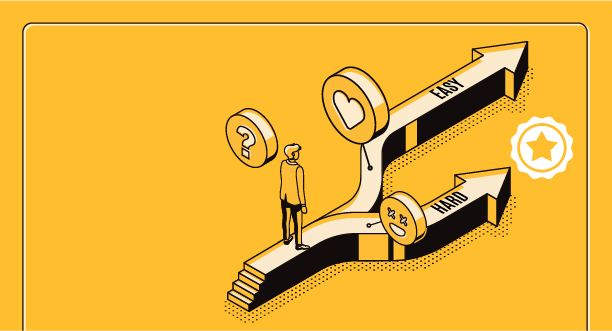There is something that always gets under my skin.
While there is near-infinite buzz around topics like digital transformation, the future of work, and the customer and employee experience, the conversation around these vital areas always seems to devolve into a narrow-minded, myopic view of what’s going on.
Rather than being the entry point into what should be much larger conversations, these discussions end up turning inward, looking at some narrow piece of the puzzle.
Digital transformation turns into a conversation about technology. Customer experience becomes a buying experience dialogue. And The Future of Work morphs into a discussion on new collaboration methods.
But while these more detailed conversations are worthwhile in their own right, they miss the much more critical big picture conversation that we should be having: each of these areas are elements of the more fundamental transformation of an organization’s business and operating model needed to survive in the Digital Era.
The Big Idea: From Sustaining to Disruptive Innovation
The modern enterprise is stuck in a line of thinking that the late Clayton Christensen called sustaining innovation. Rather than an innovation that creates disruption, sustaining innovations are inherently incremental improvements to existing products, and within existing or adjacent markets.
Throughout the Industrial Age, the market has rewarded those organizations that could reliably execute on this type of sustaining innovation.
As a result, enterprises have based most of the ways that they assess, measure, and manage innovation efforts on the constructs of sustaining innovation: minimize risk and costs, focus on incremental improvement, and have a demonstrable return-on-investment (ROI).
When you look through this sustaining innovation lens, therefore, it becomes easy to see why people take a reductive view of what should be disruptive topics like digital transformation, the customer experience, and the future of work.
As a society, we have programmed our workers to see the world through this lens. As a result, they take a big disruptive topic and translate it into how they can make an incremental improvement to what already exists.
The problem, however, is that what we’re really talking about when we use these terms is, in fact, a disruptive transformation.
The Impact: Transformation Must Be Continuous
In an article for CIO.com entitled LA Fitness, ‘Hotel California’ and the Fallacy of Digital Transformation, I wrote, “The existence of a transformed business model and its supporting operating models, therefore, becomes one of the most reliable indicators that true digital transformation is occurring. The converse is also true — if your business model does not become almost unrecognizable, there’s a high probability that you’re not transforming anything at all.”
That gap is the challenge. In too many organizations, when all gets said and done with their supposed transformational efforts, things look much the same.
They have transformed nothing.
When I talk about the Digital Experience Supply Chain, I’m talking about a continuous cycle of transformation.
While at the core, it represents a shift in value-creation away from optimization to creating a differentiated customer experience, the way you execute that shift is to continually transform your business model and operating models around the experience you seek to deliver.
Without the continuous transformation of your business and operating models, you’ll never succeed. Any meaningful change you try to make to the experience will eventually run headfirst into structural barriers that exist as part of your current way of doing business.
The only way to truly transform the experience is to transform everything.
This inescapable fact is why my skin crawls when I hear people talk about the importance of the customer experience or digital transformation or the future of work — and then talk about them in this narrow, incremental manner.
The Next Step: Start With Your Mindset
This idea that we can’t talk about these types of issues without talking about full-scale business and operating model transformation is daunting.
After all, there’s a good chance that you cannot drive that sort of execution within your organization on your own. Few of us can. (If you do happen to be part of executive management, however, you’d better get crackin’!)
You may not be able to drive this type of wholesale transformation on your own. But what I’m talking about is more of a mindset. How are you thinking about these ideas? Are you thinking big or small? Are you looking at things with a disruptive or sustaining perspective?
While you may not be able to execute this kind of transformation on your own, I guarantee that you will play an essential role in your organization’s ability to do so.
I have long said that there is no such thing as organizational transformation — only personal transformation multiplied across an organization.
So your challenge is to first transform your own mindset.
You need to begin to look at things — almost everything — disruptively, casting off the safety and comfort of incremental thinking. When you do, you will help to create a groundswell of mindset shifting amongst those who look to you for guidance and inspiration (trust me, they’re watching!).
And you’ll have a ready-mindset when your organization finally recognizes that they must execute meaningful transformation.
So your exercise today is to challenge yourself. For the next week, actively practice adopting a disruptive mindset. See what happens.
